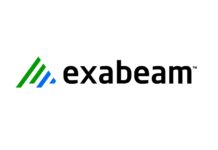Data analytics is now a driving force in digital transformation and as it has developed, it is now being used in innovative and exciting ways. Ecommerce development and ecommerce development companys are promoting and efficiently utilizing big data analytics.
- IoT analytics: IoT analytics is the merger of data analytics and IoT. Gartner stated that by 2020 there will be over 20 billion IoT devices. IoT devices can connect to networks and they include smart lighting and health monitors.
Data analytics is already being incorporated into IoT devices on a large scale. Analytics delivers transparency and this makes an ideal partnership with IoT devices. All IoT devices generate data that can be monitored with data analytics platform. - Augmented analytics: Augmented analytics continues to grow as it is a dominant driver in the purchase of business intelligence. Augmented analytics is in use in business analytics.Augmented analytics helps business to interact with the insights they generate.
According to Rita Sallam, “Data science is evolving in the same way where machine learning and some AI techniques are being used to automate the feature selection process, the model selection process, even the code generation once a model is selected.” - Streaming analytics: Your organization will be better if you act quickly on new pieces of data. Streaming analytics focuses on quickly processing incoming data. It automates decision making by making use of machine learning models. Streaming frameworks include Spark, Kafka and Flink.
- DataOps data analytics: DataOps is an operations methodology that is agile. According to Christopher Bergh, “DataOps is the recognition that a set of problems have crept into organizations over time and slowed down productivity.” DataOps is used to combine data engineers and DevOps teams.
DataOps is used to efficiently build data analytics platforms. According to Nexla, 73% of companies invested in DataOps in 2018. There is an increase in DataOps investments because of the challenges involved in data analytics pipelines. - Data governance: Data is valuable and treating it careless is a risk that no business can afford. Data breaches are growing and millions continue to be affected by identity theft according to The Harris Poll. Many organizations are now security conscious when it comes to big data.
- Growth of deep learning: Organizations want to monetize data sets and they will continue to experiment with deep learning frameworks such as Caffe, TensorFlow, PyTouch, MXnet and Keras.
Organizations are finding new ways to implement deep learning. Financial institutions have found that neural network algorithms are good at spotting frauds. - Special Kubernetes: Kubernetes help to orchestrate and mangate virtualized Linux containers that are in the cloud. It is the glue that holds multi-cloud and hybrid deployments. Supporting kubernetes is a requirement for software vendors.
- Cloud technology: The cloud is getting bigger with its tools and technology. In 2019, more business will gravitate to public cloud providers.
- Machine learning: More organizations now use machine learning to augment operational analytics pipelines. Trends accelerating the use of machine language are citizen data scientist and the use of automated tools by data scientists.




















